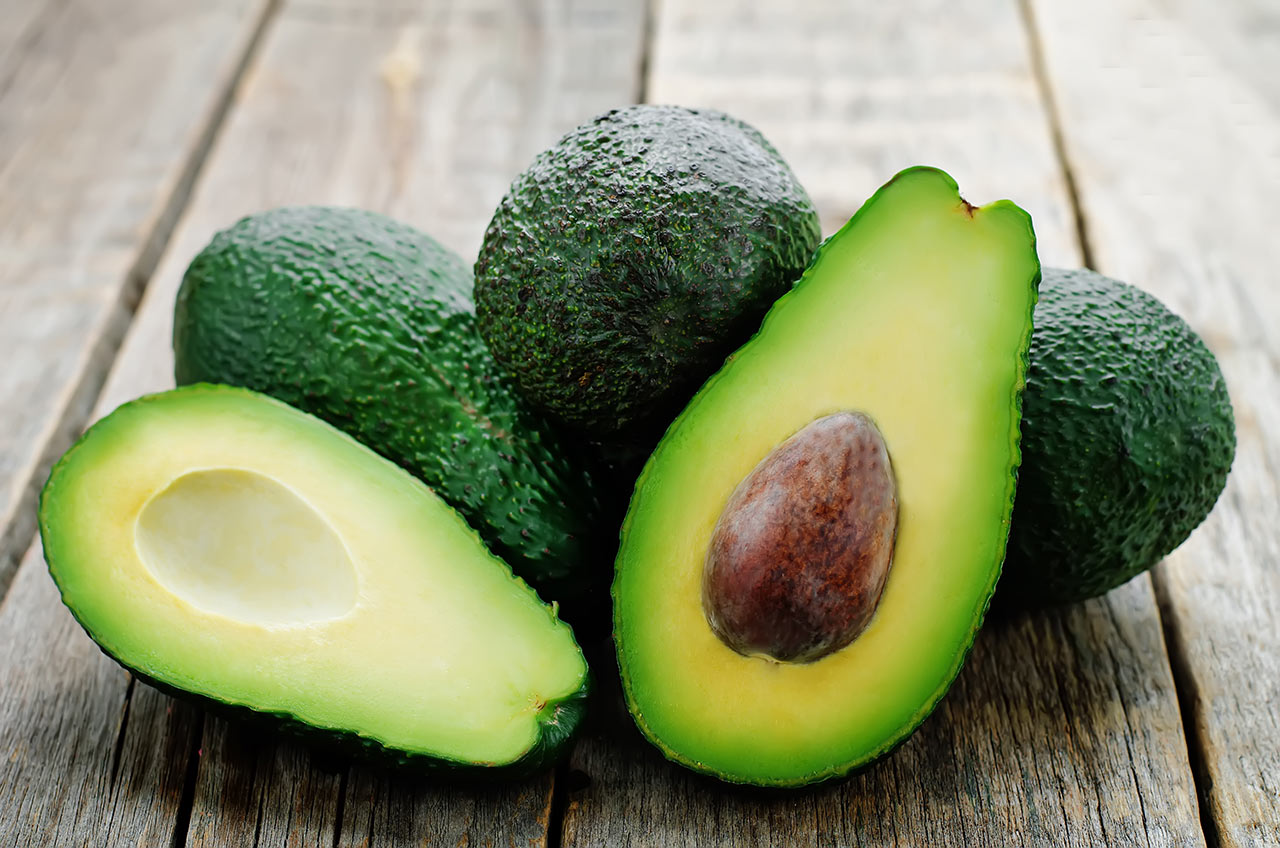Discovering the Diverse Types of Avocados
One of the most delicious foods produced throughout the world is the avocado. Some may be hard to cut and peel, but anyone who’s a fan of the fruit (yes, it’s a fruit) will say that it’s worth the effort. The taste of avocados is unique, and their health benefits and uses in many dishes are undeniable.

For such a popular food, many people may not know much about avocados beyond their appearance and taste, but there’s much more to them than meets the eye.
A Little About Avocados
It’s believed that avocados, which grow on trees, originally came from Central America, South America, and Mexico. The first avocado trees in the United States were planted in the state of Florida in 1833 and then in California in 1856. All avocado varieties fall under three general classifications: Guatemalan, Mexican, and West Indian.
Data from the National Agricultural Statistics Service (NASS) of the United States Department of Agriculture (USDA) indicates California is the highest producer of avocados in the U.S., with Florida and Hawaii following. The countries producing the most avocados globally are Mexico, Colombia, Peru, and the Dominican Republic.
Most shoppers probably don’t consider the different types of avocados when buying them from the grocery store, but more than 500 varieties of fruit exist. The types of avocados vary by shape, size, rate of maturity, and texture.
Types of Avocados
While there are hundreds of types of avocados, some are better known and sold more commercially than others. The wide selection of avocados means each has variations in taste, skin color, and texture, but there’s no wrong or right avocado to use; it’s all a matter of personal preference. Thanks to their diversity, avocados can be an integral part of your overall meal preparation, no matter what you’re making.
Here are some of the more popular types of avocados and what distinguishes them from other varieties.
1. Hass Avocados
In addition to being the avocado that you’ll probably find in grocery stores most often, the Hass variety of avocado is by far the most popular in the world. On the outside, a fully ripe Hass avocado has an oval shape with pebble-like skin that changes from green to black-purple when ripe. The pulp or flesh of Hass avocados has a smooth texture and buttery flavor.
2. Fuerte Avocados
Second only to Hass avocados in popularity, Fuerte avocados are pear-shaped and have smooth, easy-to-peel skin that remains green when fully ripe. The velvety flesh is thick and yellow and has a nuttier taste than other types of avocados. They’re available for eight months out of the year and grow up to one pound.
3. Bacon Avocados
Despite the name, Bacon avocados unfortunately do not taste like bacon, but their yellow-green flesh and slightly sweet, nutty taste make it a delightful treat. This medium-sized oval-shaped avocado has smooth green skin that’s easy to peel but has a large pit inside.
4. Brogden Avocados
Brogden avocados have smooth, deep purple skins that turn black when ripe. A hybrid of Mexican and West Indian avocados, the green-yellow pulp has a nutty flavor and rich taste. Brogden avocados are more tolerant of cold weather than other varieties.
5. Carmen Hass Avocados
The Carmen Hass variety of avocados has an oval shape and a grainy, thick skin that turns black when ripe. It has a slightly larger pit than other avocados and resembles Hass avocados but with less flesh. Carmen Hass avocado trees produce fruit one to two months earlier than the Hass variety.
6. Choquette Avocados
The first thing distinguishing Choquette avocados from others is their smooth, shiny, light green skin when ripe and their high water count. Originating from Florida, these large avocados have a nutty flavor and smooth texture, ideal for making guacamole and smoothies.
7. GEM® Avocados
Larger than most avocados, the GEM® variety has an oval shape and thicker skin with a coarse texture and gold flecks. The pit is medium-sized, and the pulp is particularly smooth compared to other avocados.
8. Gwen Avocados
Another variety of fruit that closely resembles the popular Hass variety is the Gwen avocado. It has an oval shape with bumpy, dark green, thick skin that’s easy to peel off. It’s a little larger than the Hass avocado and has a small seed with a nutty, butter-like flavor.
9. Holiday Avocados
As the name implies, Holiday avocados ripen during the holiday season. Holiday avocados have a thick skin that retains its green color when it’s ripe. They’re large and have a rounded pear shape with a large pit and dense pulp.
10. Joey Avocados
An oval-shaped fruit, Joey avocados have purple-black skin when ripe. The color of the creamy flesh varies from yellow-green to bright yellow. Its rich, nutty taste makes it perfect for use in avocado smoothies and salads.
11. Lamb Hass Avocados
Lamb Hass avocados are a hybrid of Gwen and Hass avocados. When ripe, they have a purple-black skin with a rough surface that’s easy to peel. While it’s generally a large avocado, it has a seed of medium size. It has a nutty taste that’s very smooth.
12. Lula Avocados
The Lula avocados run bigger than other varieties, growing up to one pound, and have a slightly higher water content. Under the smooth, shiny green skin is a creamy pulp with a buttery and nutty taste.
13. Maluma Avocados
These pear-shaped avocados originate from South Africa. They have a deep purple-black exterior with a gritty texture when they’re ripe. The pulp is smooth with a yellow-green color and has a nutty, rich taste.
14. Mexicola Grande Avocados
Mexicola Grande avocados have a round pear shape with a deep green skin that turns black as it ripens. It has a large seed with rich, smooth, sweet pulp that’s a green-yellow hue. One of the big differences between the Mexicola Grande avocado and other types is that the latter has an extremely thin skin that’s edible when it’s ripe.
15. Monroe Avocado
A smooth, bright green avocado that keeps its color when ripe, the Monroe avocado is one of the larger ones, growing upwards of two pounds. This fruit has a mild taste and firmer flesh than other avocados. It’s known as one of the more cold-tolerant avocados.
16. Pryor Avocados
Also known as the Fantastic avocado, this is one of the smaller types of the fruit. Pryor avocados have smooth, brilliant, light green thin skins that stay the same color as they ripen and come in a pear or oval shape. The pulp had a nutty flavor with a creamy texture.
17. Reed Avocados
A large, round avocado with an equally large seed, Reed avocados grow up to two pounds. Like several other avocado varieties, they stay green when ready to eat. The Reed avocado has a thicker skin, which makes it harder to peel, but once it’s peeled, it reveals a strong, buttery-tasting pulp.
18. Russell Avocados
One of the more unusual-looking avocados is the Russell variety. Unlike other avocados, this one has a long neck that grows up to 13 inches long and resembles a zucchini. Russell avocados stay green as they ripen and have a light green fruit inside.
19. Zutano Avocados
Zutano avocados look a lot like the Fuerte variety with a milder taste. They have a thin, glossy, yellow-green skin that turns green when ripe. Zutanos have a moderately sized pit, and its pulp has a hint of citrus flavor to it.
Health Benefits of Avocados
Besides their delicious taste, the health benefits of avocados are well-documented. They’re full of Vitamins B6, C, E, K1, folates, and potassium, high in monounsaturated or “good” fats and fiber, have a low amount of sugar, and offer some of the copper that’s essential for the body to function.
While avocados are rich in vital nutrients, they’re also high in cholesterol, so it’s wise to eat them in moderation. All types of avocados can be a regular part of a healthy diet, provided you’re mindful of portion sizes.
Avocado Uses in Food
Avocados of all varieties have an amazing taste and are a terrific addition to any meal. Their light flavors mean they complement other foods without overwhelming them.
Naturally, avocados are the main ingredient in guacamole and an excellent addition to salads. But there are many other uses for avocados in different foods.
They’re a great ingredient to add to fruit and vegetable smoothies and smoothies for weight loss. The fruit is also used to make avocado toast, stuffed avocados, and other entrees. Additionally, you can use avocados as a replacement for other fats that aren’t quite as healthy, like butter, cheese, oil, mayonnaise, and sour cream.
Freezing Avocados
Yes, you can freeze them! Here are the step-by-step instructions for storing avocados long-term in the freezer.
Buying Avocados
If you’re unsure how to buy ripe avocados, avoid ones that feel too firm. Instead, look for ones with a somewhat firm surface. If the only avocados available feel too hard, you can accelerate their ripening by placing them in a paper bag until they soften a bit.
If you have a ripe avocado but aren’t ready to eat it just yet, store it in the refrigerator. If your avocados are ripe to the point of being soft, that’s the perfect opportunity to use them to make smoothies, guacamole, and other dips.
No matter how you decide to eat avocados, enjoy them!
This article originally appeared on Pink When.
